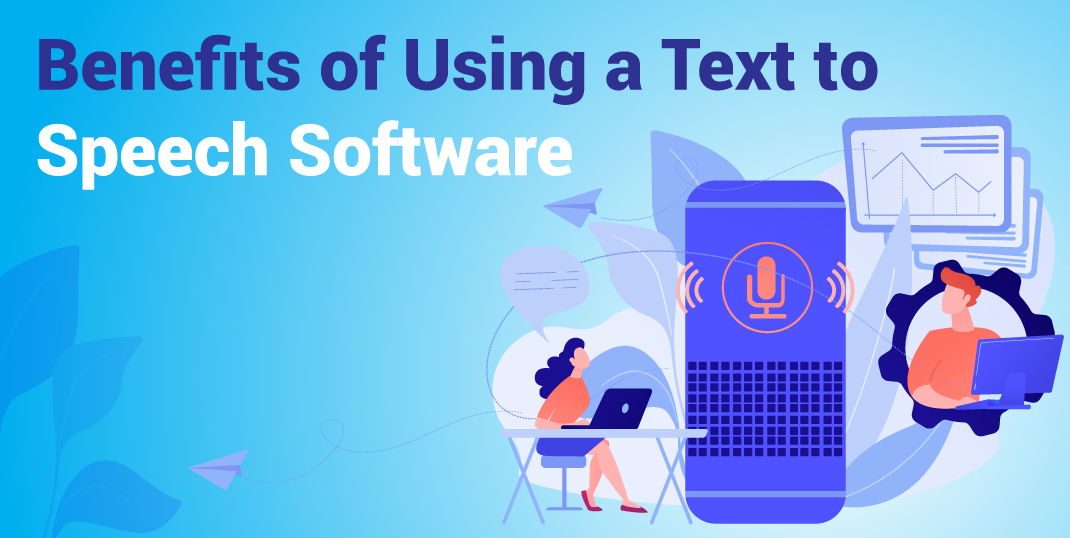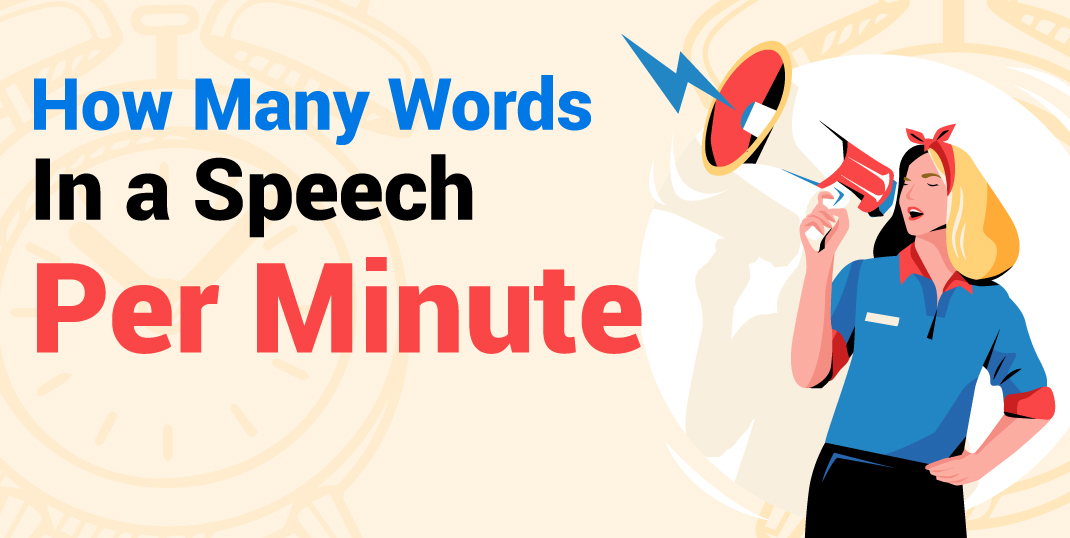Benefits of Using a Text to Speech Software: The Power of Voice

Introduction
Have you ever wondered how technology has evolved to make our lives easier and more efficient? One such advancement is the development of text-to-speech (TTS) software.
Initially, people were skeptical about the effectiveness of TTS software. Many questioned its ability to convert written text into spoken words accurately.
However, as time passed, these doubts were dispelled, and TTS software has now become widely embraced for its numerous benefits. Some of these software are so good that they can convert text to speech with emotion!
Yes, that's right. You read that correctly! Whether sad, angry, or excited, top-notch TTS software can reveal these emotions on the output.
Furthermore, nowadays, TTS software is used in various industries and settings, such as education and customer service call centers.
If you want to know what TTS is, how it works, and its benefits and drawbacks, continue reading to the end to find out.
What Is Text-to-Speech Software?
Text-to-speech software is a type of assertive technology that reads digital text aloud. The software allows users to listen to the content instead of reading it on screen.
Certain text-to-speech applications have advanced features like optical character recognition (OCR). It enables them to vocalize written content extracted from photographs.
How Does Text-to-Speech Software Work?
The process involves two stages: the front end and the back end. Users interact with the software interface in the front end by entering the text they want to convert and setting preferences. These may be things like voice, language, and tone.
Once you have entered the desired text and preferences, you simply hit the convert button to initiate the conversion process.
Behind the scenes, several components work together in the back end of the software to convert the text into speech. The first stage is the
Pre-processor - The text is taken, cleaned, and broken down into words. This operation enables the software to understand the pitch and tone of the text, which are important for generating natural-sounding speech.
Encoder—Once the text is preprocessed, it enters the encoder input. This is where linguistic features come into play. The encoder processes the text using pronunciation tags, part-of-speech tags, and syntactic structures.
Decoder—In this stage, latent algorithms are used to process the text further. The decoder converts the linguistic features into acoustic features, which are essential for generating speech.
This conversion allows for a more accurate representation of the original text through acoustic signals.
Vocoder - The vocoder takes the acoustic features generated by the decoder and converts them into a waveform. This waveform represents the speech generated based on the input text.
The vocoder's role is crucial in creating intelligible and natural-sounding speech output from the processed text.
Benefits of Using Text-to-Speech Software
Supports many languages – Many text-to-speech software often comes with multilingual capabilities, allowing them to support numerous languages.
This is particularly beneficial in diverse environments where communication in multiple languages is necessary.
Brand voice consistency - Maintaining a consistent voice across different channels is essential for brand identity and recognition for businesses and organizations.
Text-to-speech software can ensure this consistency by generating speech using predefined parameters such as tone, style, and pronunciation.
Cheaper - Compared to traditional methods of producing audio content, text-to-speech software is often more cost-effective.
With TTS, there is no hiring of voice actors (which can be expensive) or associated post-production editing costs, reducing production costs.
Increases accessibility for those with reading disabilities - TTS converts text into spoken words, which allows those with dyslexia, visual impairments, or other reading challenges to access written information with ease.
This fosters an inclusive environment where everyone has equal opportunity to learn and grow.
Super convenient for multitasking - With TTS, users can listen to articles, emails, or reports while engaged in other activities such as exercising, commuting, or performing household tasks.
This efficiency not only optimizes productivity but also allows for better time management.
Enhances language learning by hearing correct pronunciation - Language learners, in particular, stand to benefit extensively from TTS tools. Hearing the correct pronunciation of words in a foreign language can significantly enhance learning.
It provides an immersive experience miming natural language exposure, which is crucial for developing accurate pronunciation and listening skills.
Saves time - TTS eliminates the need to read through long documents manually.
Professionals who deal with extensive reports or research papers can instead listen to the content while focusing on high-level analysis and critical thinking. This can lead to more effective use of time and quicker assimilation of information.
Reduces eye strain from staring at screens - For those who spend hours in front of a computer or mobile device, TTS software can help reduce eye strain.
If you listen instead of reading, you can give your eyes the much-needed break from the constant glare, which can mitigate the effects of Computer Vision Syndrome.
Perfect for on-the-go—TTS software is perfect for on-the-go learning and information consumption for individuals constantly on the move.
You can transform unproductive time into an opportunity for personal development or leisurely reading without fixating your eyes on the text.
Personalizes user experience with adjustable voices and speeds - Personalization is another key feature of modern TTS tools.
You can tailor your listening experience according to your preferences with adjustable voices and speeds. This ensures comfort and enhanced engagement with the content.
Disadvantages of Text-to-Speech Software
Text-to-speech software has come a long way in recent years but still has its fair share of disadvantages. These may include;
Some lack emotional tone – Emotions are what makes us humans. In some cases, the emotions that come with spoken words are all that matter. It's why TTS needs to have an emotional tone.
While they may be able to accurately read the words on a page, most often struggle to capture the subtle nuances and emotions that a human voice can bring to a piece of text.
This can make the listening experience feel robotic and detached.
May sound unnatural—Text-to-speech software can also sound unnatural at times. The computer-generated voices used by these programs are designed to imitate human speech, but they often lack naturalness.
Speech intonation, rhythm, and cadence can be off, leading to a stilted and artificial-sounding delivery.
Limited voice variations - Most programs offer a range of voice options, but these choices are often limited in age and accent.
This lack of variety can make it difficult to find a voice that matches the intended tone or context of the text being read.
It can also make it challenging to differentiate between different characters or speakers, which can be problematic when listening to dialogue-heavy content.
Pronunciation issues – While TTS is designed to accurately pronounce words, they can still struggle with unfamiliar or uncommon terms.
This can lead to mispronunciations that can be jarring for listeners and may even result in a loss of understanding or clarity.
Less engaging than human voice - When compared to a human voice, text-to-speech software is often less engaging.
A human narrator can adjust their tone, pace, and inflection on the fly to maintain engagement and interest. This dynamic adaptability is something TTS has yet to master fully.
Not always accessible offline - Many programs require an internet connection to function. As a result, offline users may be unable to access the software.
What to Look for in Good Text-to-Speech Software
Any high-quality TTS software should have the following features;
Natural sounding voices - Text-to-speech software should provide high-quality AI voices replicating human speech's expressiveness and natural prosody. And should also offer both female and male voice options.
Simple and easy-to-use interface - The software should be user-friendly, allowing users to navigate and create lifelike speech with minimal training and few clicks.
Change speech quality to professional - Integrated voice changer features enhance voice quality and allow users to modify gender, language, and accent, reducing the need for expensive studio recordings.
Import and export files and media – A good TTS software should support importing and exporting files in various formats, including text and media files. This can facilitate the creation of comprehensive voiceover content.
Support different languages and accents - Multilingual capabilities broaden content reach, overcome language barriers, and save costs for hiring voice artists for multilingual versions.
Customization features -Users should be able to customize voiceovers for specific use cases, adjusting tone and style to achieve desired project effects.
Conclusion
The power of voice cannot be underestimated in text-to-speech software. Such a tool offers numerous benefits and can greatly enhance productivity and efficiency in various aspects of life.
Text-to-speech software provides a versatile and accessible solution, from aiding individuals with visual impairments to improving language learning skills.
Additionally, text-to-speech software offers a hands-free alternative for multitasking, allowing users to listen to documents or articles while engaging in other activities. If you are thinking of giving TTS a try, check out speechingly.com!

Writer - Speechingly
Writer - Speechingly is a talented content writer with a special focus on tech innovations, including Speechingly. With a knack for simplifying complex topics, Emily crafts engaging and informative content that resonates with diverse audiences. Her expertise spans blog posts, product reviews, and SEO-driven articles, making her a versatile asset in the digital landscape. When she's not writing, Emily enjoys reading, hiking, and exploring the latest trends in technology.
